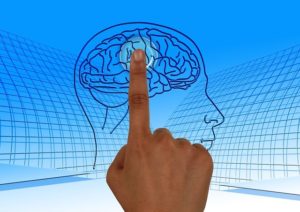How To Improve Your Memory: How Memory Works

The mysteries of the brain intrigue most of us. That 3-pound mass of grey matter with its 100 billion neurons protected by a relatively puny bony structure (the skull) literally operates everything.
The brain process we seem to be most affected by in our everyday life however is our memory. In fact people will often make comments about losing their memory.
We worry about memory loss all the time, especially since dementia and particularly Alzheimer’s disease have gotten so much attention.
Memory, simply defined, is having the mental capacity or faculty to retain facts, events, impressions, etc., or of being able to recall previous experiences.
How Memory Works
Understanding memory and how it works can be very complicated. However, there are the three basic memory functions:
- Acquisition (or encoding)
- Consolidation (or storing)
- Retrieval (or recalling)
Acquisition (encoding):
Memories are formed by acquiring (or learning) information. In this stage you actively receive and process data. This data gets placed, for a time, into temporary nerve cells, like the ram in your computer.
This information can have color, sound, smell, or emotion connected to it. The more the memory is connected to one of the senses the more likely it is that it will stay with you. Depending on how important or meaningful the memory is to you, it will either get dissolved or get transferred to storage.
Consolidation (storage):
Once a memory is acquired it must be strengthened or enhanced to be consolidated and stored for a while. A memory can often be reinforced because it relates to an already pre-existing memory.
For example, you would likely remember learning something new about your spouse or loved one than you would about a stranger because you already have many corresponding spouse memories in your brain.
Retrieval (recalling):
We use our short-term or working memory to retain and retrieve lots of data every day. Remembering a phone number or someone’s name is an example of short-term memory recall. Here is where the brain calls upon the nerve-cell pathways to bring up stored data.
The retrieval process can be slow or fast (instant recall) depending on many variables such as: how relevant the material was in the first place, how rested you are at the time you are trying to remember and how emotional you feel at that moment.
Long term memory is the place where working memory stores data. Long term memory is the equivalent to a storage disc or hard drive where the data is kept permanently.
In order for something to be stored in long term memory it has to be strengthened or reinforced. This incredible process involves a part of the brain known as the hippocampus, located in the inner fold of the temporal lobe (we have two hippocampi, one on each side of the brain).
The hippocampus is responsible for sorting through all these bits of data, like code, and making sense of them by sending them back to our consciousness with meaning.
When a memory gets reinforced through repetition it travels through the hippocampus several times so as to become “imprinted” or permanently stored.
Improving memory, both short and long term, has always been a challenge. Here are some tips for improving your memory.
 How To Improve Your Memory
How To Improve Your Memory
There are many ways to improve your memory. Getting enough sleep, eating right, reducing stress and not abusing drugs or alcohol are important for obvious reasons.
However, many of the following tips are memory assisting (mnemonic) methods that you can employ today.
Concentrate/Pay Attention: It sounds simple but for Acquisition or Encoding to take place you must concentrate on what you are trying to remember. Often we are so busy doing something that we are not paying enough attention to encode the information in the first place.
Picture It: Whenever possible create a picture in your mind of what you are trying to remember. Adding a visual sense or image to the information creates more relevance and makes it more likely to get stored.
Make It Relevant: It is easier for Consolidation and Retrieval to take place if the new information is associated with already existing information. Pairing the new information with an image, a joke or even a sound will help.
Use Acronyms: Using the first letter of the words you are trying to remember to make up another word has always been a great way to remember long names or lists of things. For instance the National Aeronautics and Space Administration is NASA, a web log is a BLOG and Information Technology is IT.
Use Acrostics: An Acrostic is text (or a poem) in which the letters (or words) of the Acrostic spell another word. The letters often come at the beginning of the words. For example, the Acrostic RANED helps you to remember to: Read A Newsletter Every Day.
Use Rhymes: Who doesn’t remember, Thirty days hath September, April, June and …what was the next one? Rhyming is fun and helps put otherwise mindless or irrelevant information into organized auditory patterns.
“Chunk” Your Information: This means putting information into manageable segments. For example if you want to remember a series of numbers you might turn them into segments of 5 or 7 each. Telephone numbers are mostly 7 digit segments (apart from area codes) so that we can remember them. You can also give them a sort of rhythm as you commit them to memory.
RepeatRepeatRepeat: Repetition is practice and we all know that “practice makes perfect”. Repetition sends the target information through the hippocampus (see above) thereby making it more likely to Consolidate or get stored in the brain.
Organize It: Organizing information into relevant categories gives it more meaning. A form of organization is a simple outline (like the ones you learned in school) that breaks an idea down into relevant parts. An example might be remembering items on a shopping list in food groups rather than random grocery items.
Make Dramatic Connections: Associating the information you want to remember with different images can help in effectively storing it in your brain for retrieval. For example if you wanted to remember the name, Tom Cruise you might associate him with a cruise ship.
Talking Out Loud: Repeating the information out loud by saying it to yourself or to others creates an opportunity for auditory encoding to take place. Saying it to others is a form of teaching others the information. This is active learning and is very helpful in storing information.
Click here to learn more about staying focused
Click here for some additional tips to improve your memory
About the Author
Dr. Stan Hyman is a licensed psychotherapist and life coach in private practice in Miami, Florida. He works with people wanting to perform at higher levels to achieve success in both life and work. This includes individuals, couple, athletes, entrepreneurs and business partners.
